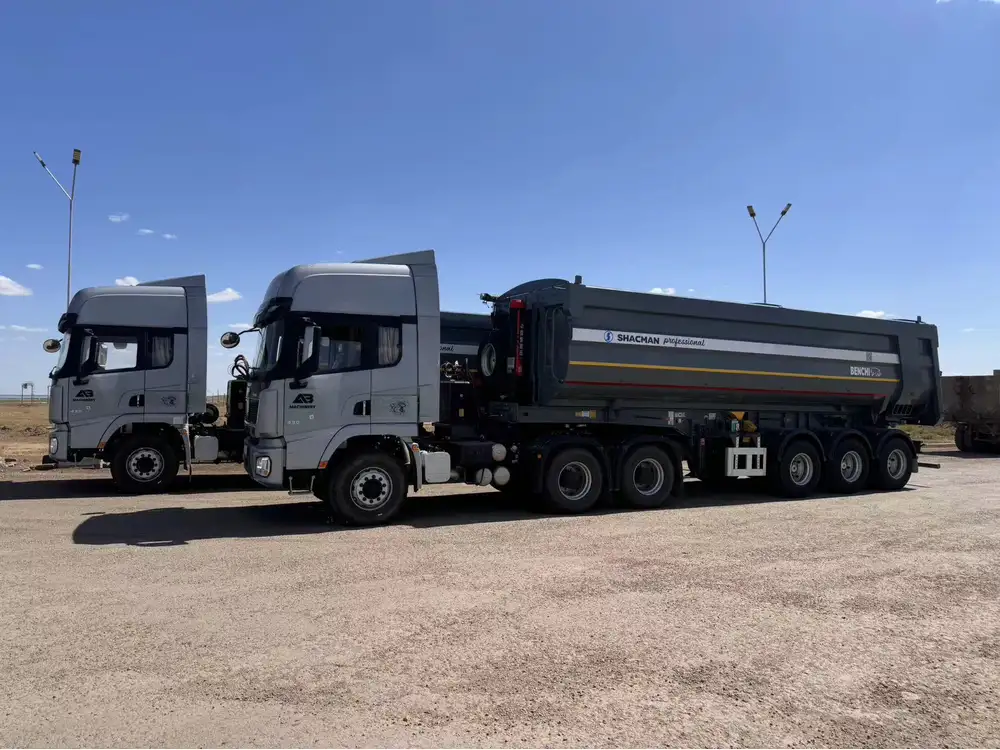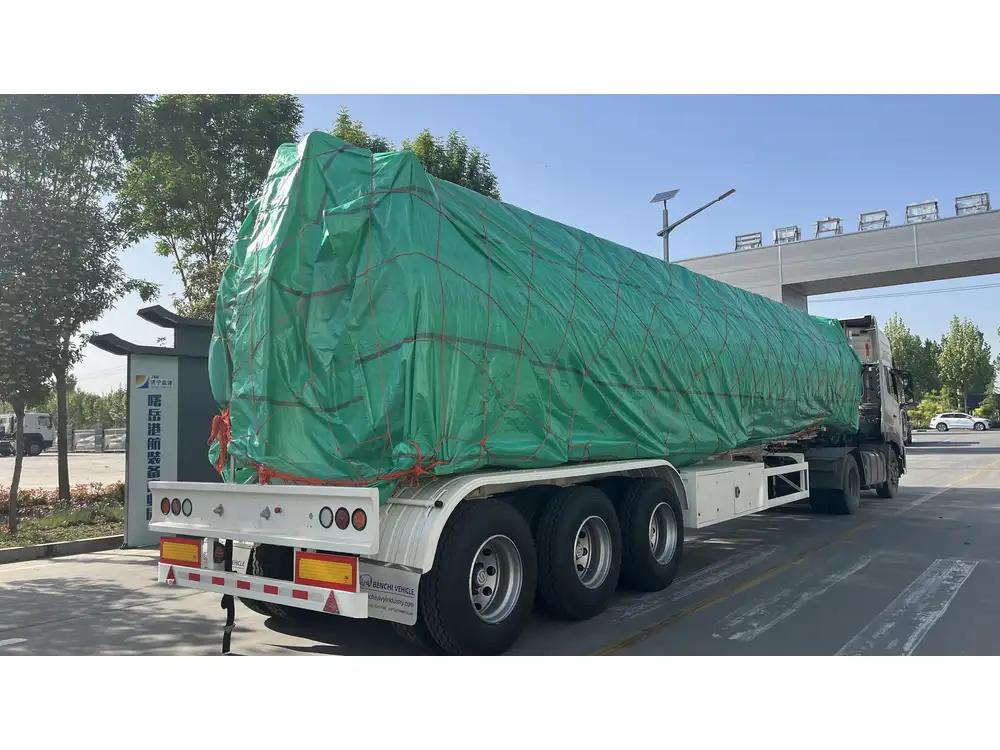When it comes to transporting goods, understanding the dimensions of the semi-trailer you’re using is crucial for optimizing loads, ensuring compliance with regulations, and achieving operational efficiency. One of the key aspects of a semi-trailer’s design that merits attention is the height of the dry van walls. This article aims to provide comprehensive insights into the question: how tall are semi-trailer dry van walls, exploring various factors that influence this measurement and offering guidance on making informed decisions for your transportation needs.
Key Specifications of Dry Van Trailers
Standard Heights of Semi-Trailer Dry Van Walls
Most semi-trailer dry vans are available in two standard interior heights:
Under 13.6 feet (4.14 meters): Commonly referred to as “high cube” trailers, these models typically feature a wall height ranging between 8.5 to 9.5 feet (2.59 to 2.90 meters). They are beneficial for transporting taller cargo without exceeding the total height restrictions on roads.
Over 13.6 feet (4.14 meters): These trailers, though less common, can provide heights up to 14 or 15 feet (4.27 to 4.57 meters) for specialized loading requirements.

Variation by Manufacturer and Model
Different manufacturers may offer variations based on their design philosophies and target markets. For example:
| Manufacturer | Standard Height (Feet) | Notes |
|---|---|---|
| Manufacturer A | 13.6 | High cube available |
| Manufacturer B | 13.0 | Specialized trailer models |
| Manufacturer C | 14.0 | Custom options available |
Key Factors Influencing Trailer Height
Understanding the reasons behind the variations in height is paramount. Below are several critical factors:
Regulatory Compliance: Transportation regulations vary by location, often defining maximum height limits that should not be exceeded. This directly influences the design of dry van trailers.
Cargo Type: The nature of the goods being transported can dictate the required interior height. For instance, pallets of goods, machinery, or oversized items may require customized height specifications.
Aerodynamics and Fuel Efficiency: Trailer height can affect the aerodynamics, thus influencing fuel efficiency. Modifications in height are sometimes employed to strike a balance between cargo capacity and energy consumption.
Importance of Wall Height in Transportation

Impact on Cargo Capacity
The height of the walls within a dry van trailer significantly affects how much cargo can be loaded. A taller wall allows for stacking goods more efficiently.
Maximized Space Utilization: By leveraging vertical space, businesses can optimize their shipping processes and reduce the number of trips required.
Weight Distribution Considerations: Taller walls also necessitate careful calculations for weight distribution to prevent instability during transit.
Compliance and Safety Considerations
Height isn’t merely an abstract specification; it plays a role in safety and compliance:
Load Securing: High walls provide more significant opportunities for securing loads adequately, reducing risks during transportation.
Visibility and Navigational Limitations: Taller vehicles may struggle in low-clearance areas such as underpasses and bridges. Understanding limits on wall height can enhance navigational safety.
Analyzing Market Trends: Height Versus Demand

Demand for Specialized Trailers
As the logistics industry evolves toward accommodating more extensive variations of goods, the demand for simply taller trailers rises. For instance:
- Increase in shipments of oversized industrial equipment necessitates taller trailers to avoid cargo damage while maximizing space.
Bimodal Transport and Height Concerns
The intersection of logistics modes—road and rail—often predicates the need for trailers that can accommodate varying height restrictions.
- Rail Compatibility: When a cargo needs transloading between rail and road, height becomes a logistical consideration to ensure seamless transitions.
Frequently Asked Questions

What is the maximum legal height for semi-trailers?
The maximum height for semi-trailers varies by state and country, but in the United States, it generally caps at 13.6 feet (4.14 meters). Some jurisdictions may allow higher limits with special permits.
Are there weight limitations associated with height?
While height primarily concerns space and cargo volume, weight distributions can also be influenced by wall height. It’s critical to adhere to legal weight limits to avoid penalties.
How can I determine the right trailer height for my needs?
Assess the type of cargo you frequently transport, regulatory requirements in your area, and possible routes that you will be taking. This comprehensive evaluation will assist you in selecting the right trailer.

Selecting the Right Trailer: A Step-by-Step Guide
Choosing the appropriate trailer involves a series of deliberate steps, ensuring you find the most suitable semi-trailer for your logistics needs.
Step 1: Evaluate Your Cargo Needs
- Analyze the type, dimensions, and weight of goods you regularly transport.
- Consider any seasonal variations that might necessitate different trailer configurations.
Step 2: Understand Regulatory Limitations
- Familiarize yourself with local transportation regulations regarding trailer height and weight to avoid legal issues.

Step 3: Consult with Manufacturers
- Engage with multiple manufacturers to understand their offerings, including custom options for height and design.
Step 4: Calculate Total Costs
- Factor in acquisition costs, maintenance, potential modifications for height, and operational costs such as fuel efficiency based on the chosen height.
Step 5: Plan for Future Needs
- Consider your future expansion plans. Choosing a trailer that accommodates growing business needs can be more cost-effective in the long run.

Conclusion
Understanding the height specifications and implications of semi-trailer dry van walls equips businesses with pivotal information needed for optimized logistics management. The dimensions of these trailers are not only about accommodating taller loads but also involve a complex interplay of safety, compliance, regulation, and effective utilization of space. As the landscape of transportation demand evolves, so too will the standards and specifications of trailers, making it imperative to stay informed and proactive in your decision-making process.
For effective planning and enhanced operational efficiencies, engage with manufacturers, consider your specific requirements, and explore the breadth of options available in the market. Emphasizing precise measurements and regulatory compliance will ensure that your logistics operations remain smooth and efficient, fostering growth and success in the competitive transportation sector.



